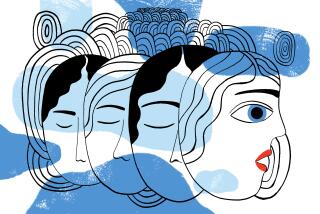Patients Counseled on Treatment Options
- Share via
LEBANON, N.H. — For 35 years after he accidentally shot himself in the leg, John Bevacqua managed just fine. But when a long-dormant bone infection reappeared and three surgeries did nothing to stop it, he agreed to an amputation.
The decision wasn’t easy. A unique program at Dartmouth Hitchcock Medical Center, however, helped him realize that getting rid of his leg was the best way to get on with his life.
“I was almost on the verge of going through another operation,” Bevacqua said. “I was in doubt when I went in there, but when I was done, I knew I was going to do it.”
Bevacqua, 58, of Weare, put his hopes on the hospital’s Center for Shared Decision Making, a tiny office with a big mission: helping patients make better, wiser and potentially less costly choices about their treatment by involving them more actively in their healthcare decisions.
The center provides free one-on-one counseling along with videos and DVDs that explain the pros and cons of dozens of medical procedures. Although all hospitals routinely give patients information to help them make medical decisions, Dartmouth Hitchcock is believed to have the nation’s only center dedicated to it.
Dr. James Weinstein, the center’s medical director, hopes that it will move medicine beyond informed consent to informed choice.
“If you break your hip, you need to have your hip fixed because you can’t walk -- you don’t have a choice. But when you have back pain or breast cancer or prostate disease or coronary artery disease, you have lots of choices,” he said. “Patients need to be empowered to make those choices.”
The center has won praise from the federal government, which is paying to replicate it at hospitals in Concord and Laconia. One goal is determining how much money could be saved by shared decision-making.
Health economist James Burgess cautions that the extra cost of spending more time with patients might exceed any savings.
“I wouldn’t say it’s a slam-dunk either way; either it’s going to save a lot of money or not going to save a lot of money,” said Burgess, who teaches at Boston University’s School of Public Health. “It’s an important new initiative that needs to be investigated.”
Weinstein’s interest was sparked a decade ago when he participated in a research project at the University of Iowa. The orthopedic surgeon was surprised to see that some surgery rates fell by 30% when patients were given more information about their choices.
“I didn’t feel like they [patients] were getting the information they needed to make their decisions,” he said. “They were talking to me, but maybe that wasn’t good enough, because I was a surgeon and surgeons do what surgeons do. Maybe they weren’t getting a fair shake.”
In another research project, he studied how spine surgery rates varied from region to region and estimated that $1.8 billion could be saved annually if the lower rates in some areas were the norm nationwide.
At the center, patients use computer touch screens to answer extensive questionnaires designed to help them identify and work through decisions. A bookshelf is crammed with videos and DVDs featuring medical experts along with “real life” patients discussing their experiences. Not everyone leaves with his mind made up; many exit with detailed lists of new questions for their doctors.
“People who are struggling with a decision start to think in a very circular way, so their thoughts are chasing each other. You can almost see it physically when they walk through the door,” said Kate Clay, the center’s program director. “What I bring to the table is my expertise as a nurse and the ability to pick out what it is that seems to be really troubling them or what it is they need to move forward.”
Bevacqua credits Clay’s patience and encouragement with helping him decide to go ahead with the amputation. After hearing that he would be capable of activities like driving and swimming, he decided to forgo further surgery that would keep him on crutches for months and might not stop the infection anyway.
“I wish I did have my leg, but I’m not getting any younger,” he said. “It’s inconvenient, but I can go on with my life like anyone else.”
The center has met resistance, however. Some comes from physicians wary of decreasing the number of procedures they perform. Others see it as a burden on their time or an infringement on of their autonomy.
“Physicians feel like, ‘Geez, this is just another thing that is going to interfere with my relationship with my patient,’ ” said Weinstein, who counters by asking a few pointed questions.
“How can physicians not want to give their patients the best information? How can health plans not want to give patients the best information?” he asks. “How can you be against apple pie?”
It’s not just old-timers who have misgivings, said Dr. Robert McNutt, a professor at Chicago’s Rush University and associate chairman for patient safety at Rush University Medical Center.
When he tackles the subject in his classes, “the students get up and scream at me, ‘If this is true, why am I going to medical school?’ ” he said. “All we get is blasted. They hate it.”
McNutt also believes that “shared decision-making” is a misnomer.
“Patients are the only ones who make choices,” he said. “All you can do is share information.”
More to Read
Sign up for Essential California
The most important California stories and recommendations in your inbox every morning.
You may occasionally receive promotional content from the Los Angeles Times.










